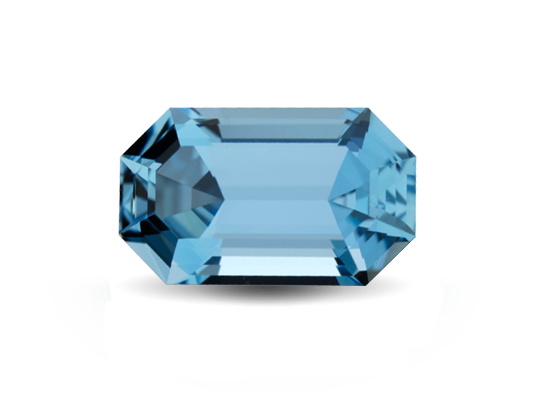Named after seawater, aquamarine’s fresh watery hue is a cool plunge into a refreshing pool.
OVERVIEW
ABOUT AQUAMARINE
VIEW GALLERY
Aquamarine’s name comes from the Latin for seawater and it was said to calm waves and keep sailors safe at sea. March’s birthstone was also thought to enhance the happiness of marriages. The best gems combine high clarity with limpid transparency and blue to slightly greenish blue hues. Like many beryls, aquamarine forms large crystals suitable for sizable fashioned gems and carvings.
AQUAMARINE DESCRIPTION
Aquamarine is the green-blue to blue variety of the mineral beryl. (Emerald is the green to bluish green variety of the same mineral.) Its color is usually a light pastel greenish blue.
Heat treatment usually gives it a more bluish appearance.
Aquamarine crystals are known to be large in size and relatively clean and well-formed, making them particularly valuable to collectors of mineral specimens.
BIRTHSTONES & ANNIVERSARIES
Aquamarine is the birthstone for March and the gem of the 19th wedding anniversary.
110 KILOS
The largest gem-quality aquamarine crystal mined to date is 19 inches long.
BERYL
Like emerald, aquamarine is a color variety of the mineral beryl.
15,000 FEET
Aquamarine is mined at high elevations in Pakistan’s Karakoram Mountains.
FACTS
- Mineral: beryl
- Chemistry: Be3Al2Si6O18
- Color: greenish blue, light in tone
- Refractive index: 1.577 to 1.583
- Birefringence: 0.005 to 0.009
- Specific gravity: 2.72
- Mohs Hardness: 7.5 to 8.0
QUALITY FACTORS
Assessment of the following characteristics determines aquamarine’s value.
COLOR
Aquamarine’s preferred color is a moderately strong dark blue to slightly greenish blue.
CLARITY
Most cut gems are eye-clean. Large examples are available without visible inclusions.
CUT
Because aquamarine’s color is light, cutting is important and well-cut gems show brilliance.
CARAT WEIGHT
Aquamarine crystals range from tiny to very large—some even up to 100 lbs.
